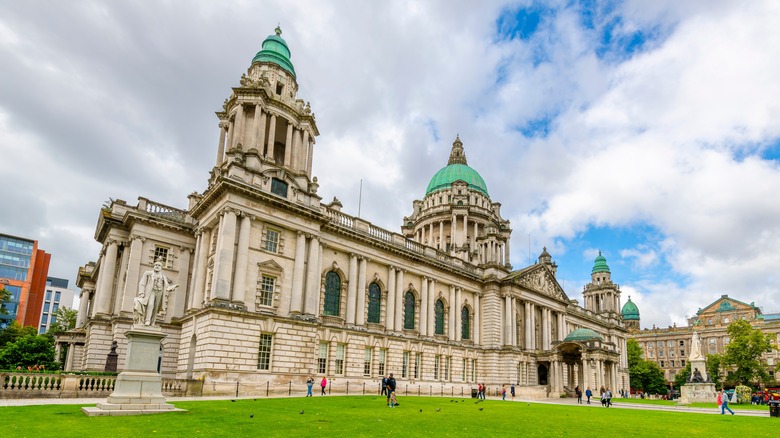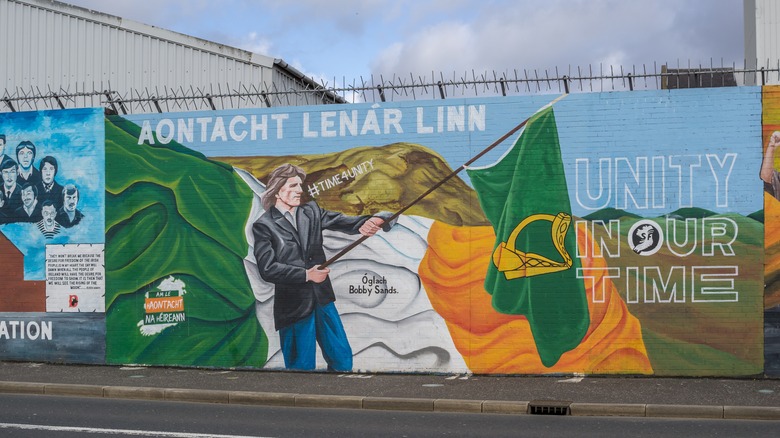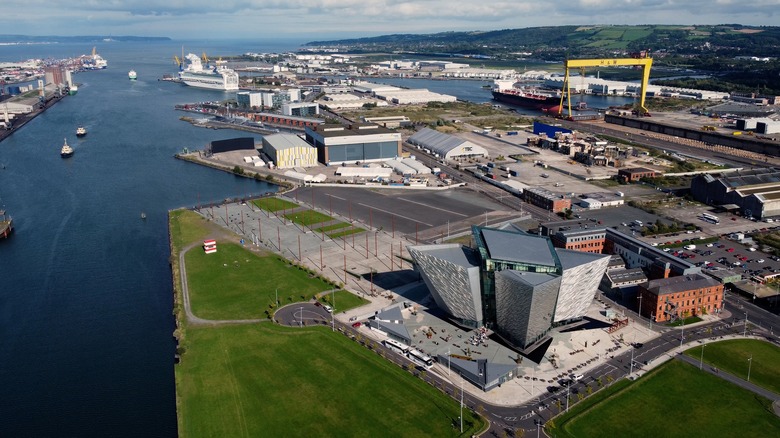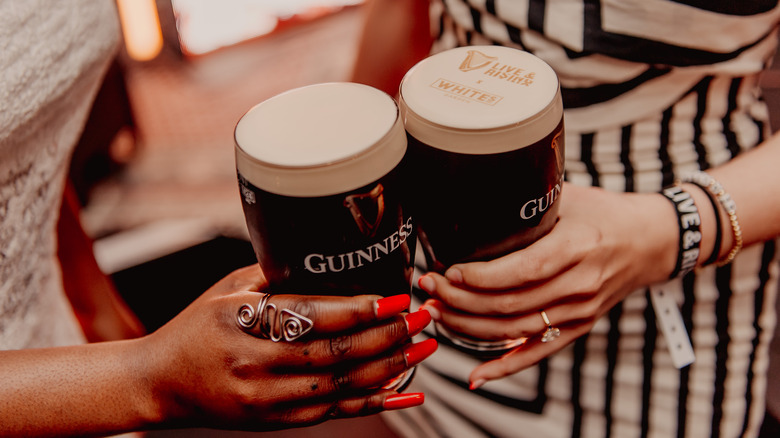The Underrated 'Second City' In Ireland To Not Skip On Your Trip, Per Rick Steves
While Ireland is well known and loved all over the world, the actual island it occupies is not one nation. When looking at a map, you'll notice that there are two sections. The northeastern portion is sectioned off from the rest of Ireland and is called Northern Ireland. While this region is on Ireland, Northern Ireland is actually part of the United Kingdom, along with England, Wales, and Scotland. Such land claims and culture clashes between the U.K. (mainly the English) and the Irish have been a source of conflict at many points in history.
While these differing opinions still exist, Northern Ireland has a low crime rate and should not be so overlooked as it seems to be. The region's capital, Belfast, is on Northern Ireland's Causeway Coastal Route and should especially find itself on an ideal Ireland itinerary. "Always overshadowed by Dublin, [Belfast] feels like a classic second city," global travel expert Rick Steves explains on his website. The struggles of its past are "an ever-more-distant memory," and the city now showcases its history and culture as proudly as Ireland and the rest of the United Kingdom do. From the building of the Titanic to plenty of Guinness, Belfast is unique and ignites curiosity in its visitors.
Hear first-hand accounts of Northern Ireland's history
Conflicts between the English and Irish date back to the 12th-century Anglo-Norman invasion of Ireland, but a particular era known as the Troubles occurred in Northern Ireland from the late 1960s through the late 1990s. Clashes between those in the region who wanted to remain part of the United Kingdom and those who wanted the region to become part of Ireland occasionally turned deadly. The Oscar-nominated film "Belfast" and the limited television series "Say Nothing" both recount this era.
Agreements to create a power balance just before the new millennia brought an end to the Troubles, but there are still geographic divisions in Belfast. Murals depicting prominent figures of the Troubles and "peace walls" marking such divisions are must-see aspects of the city. While some politically motivated murals end up being repainted with more uplifting imagery, prime locations for these displays include Shankill Road and Falls Road. Rick Steves highly recommends checking out these markers with taxi tours, though they are safe and easy to walk through, as well. Taxi tours can help you learn more about Belfast's history and perhaps even give you first-hand accounts of the Troubles. Felons Club pub (run by pro-Ireland ex-prisoners) and businesses on Sandy Row (which features more murals) can offer more insights from both sides of Belfast's population as well.
Visit Titanic Quarter and Maritime Mile
Belfast's rich industrial history includes shipbuilding, most notably the Titanic, and the city's Titanic Quarter is located at the shipyards along Maritime Mile. As you can guess, the Titanic Belfast Museum is also located here. Inside, you can follow the Titanic's timeline from inception to demise. Walk slightly northeast along the water to step on board the HMS Caroline, a warship that operated from World War I through to the early 2000s. Another ship you can set foot on at Maritime Mile is the SS Nomadic, the last existing ship from White Star Line, the shipping company that owned the Titanic. You can easily spend an entire day at this oceanfront section of Belfast because it is a lively dining and shopping destination as well.
In the center of Belfast is City Hall. This often-photographed building that Rick Steves calls "impressive" (per his website) was built in 1906, and its history is intertwined with that of the Titanic. At the turn of the 20th century, Viscount William Pirrie served as Belfast's mayor and manager of Harland and Wolff, the shipyard company behind Titanic's construction, which could explain why the interior paneling of the fateful vessel resembled that of City Hall.
Grab a Guinness at one of Belfast's lively pubs
The Victorian-era Crumlin Road Gaol is another unique place to explore in Belfast. A visit here shows you what life was like for prisoners — including prisoners during the Troubles — and why it is no longer a prison at all. In fact, it is now an event venue frequently hosting music performances. The "Crum," as it is informally called, offers tour options that combine the prison with a taxi tour of the city.
Northern Ireland may be part of the United Kingdom, but there are still plenty of places to sip on the iconic Irish beverage of choice: Guinness. Lively pubs serving this stout beer are in and around Belfast's Cathedral Quarter, which also features the opulent Cathedral Church of Saint Anne (pubs to look for include White's Tavern, Maddens, and more). Ever the realistic and conscious traveler, Rick Steves encourages travelers to see that "Ireland isn't just Blarney Stones and leprechauns," as he states on his website. While you sip on your Guinness in Belfast, you can't help but toast to the city's "powerful rebound" and abundance of intriguing locals.



